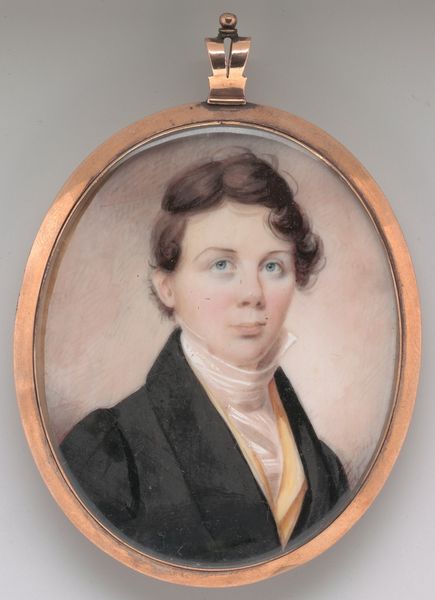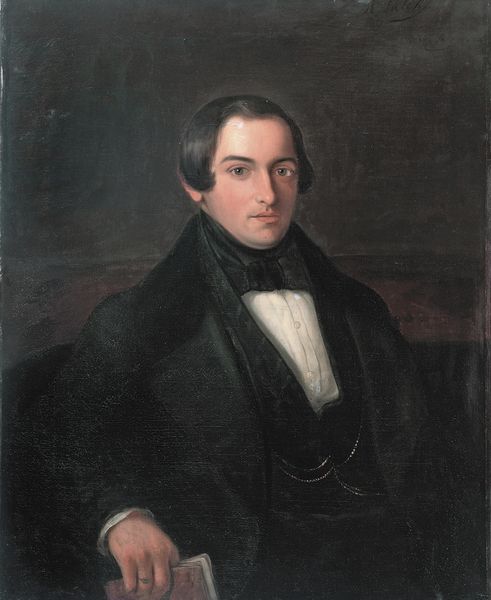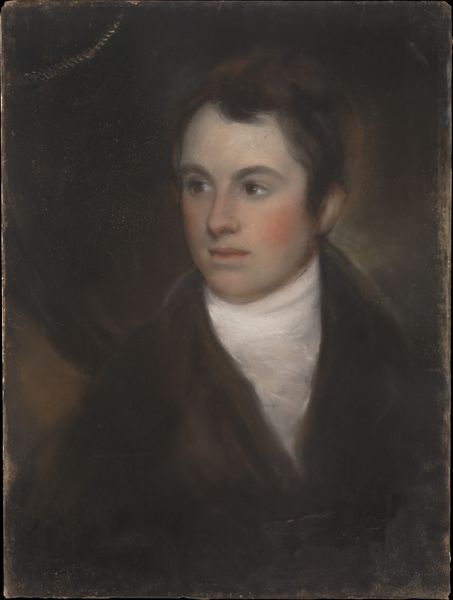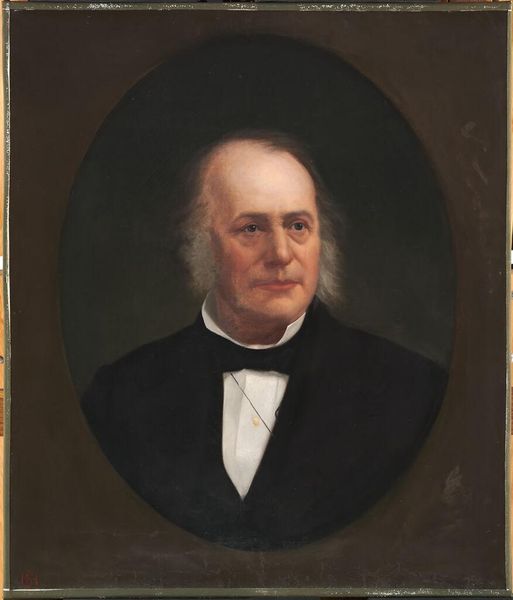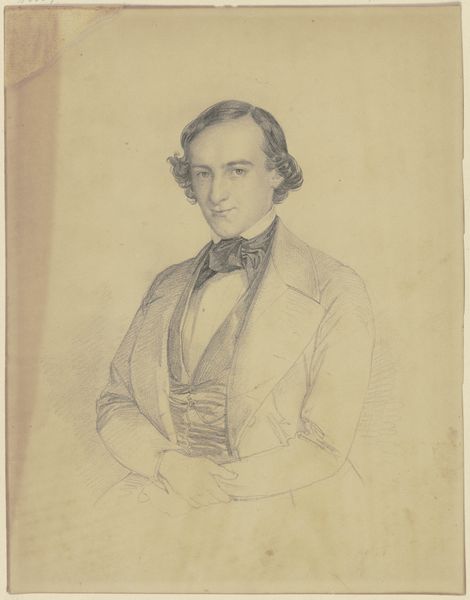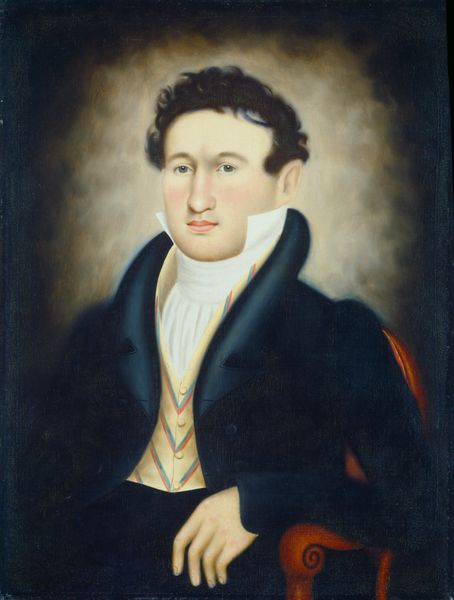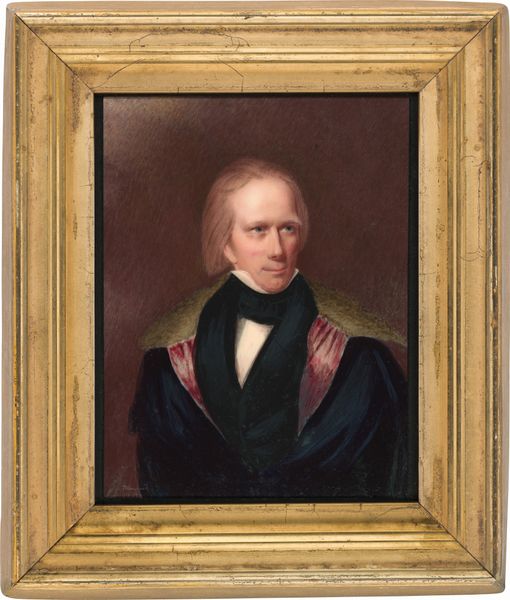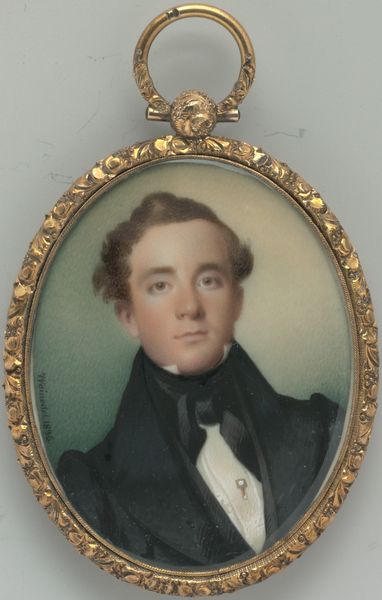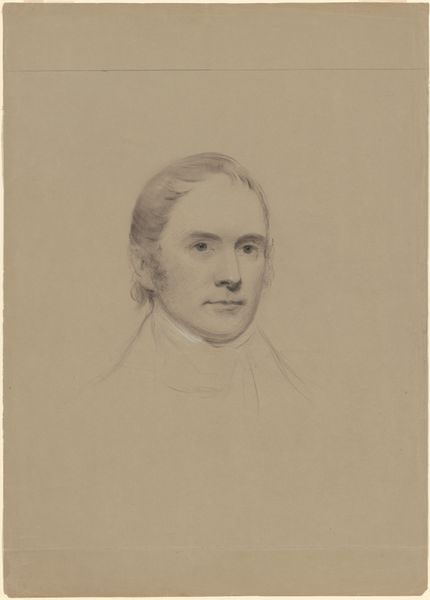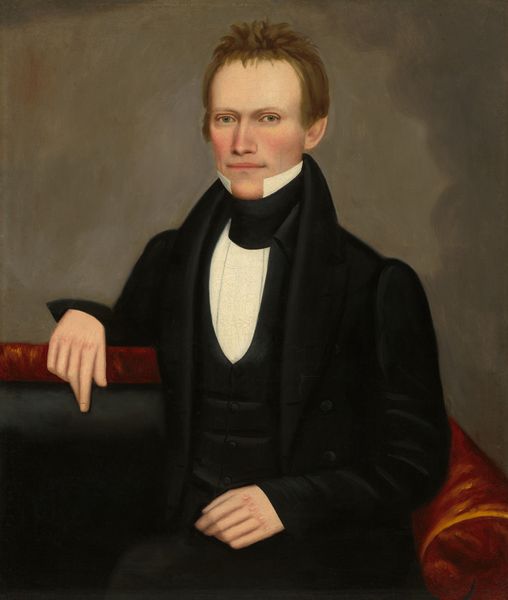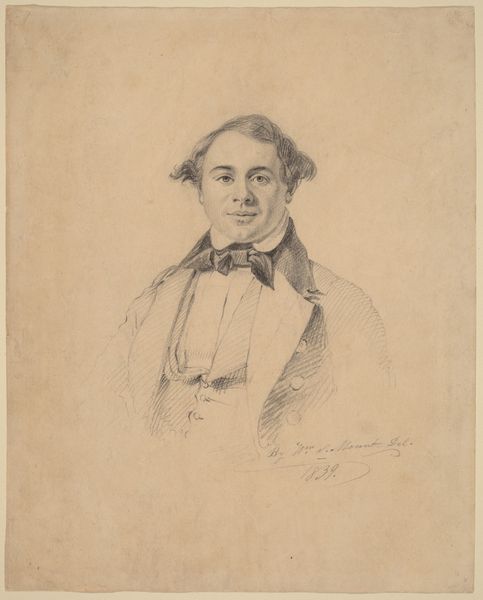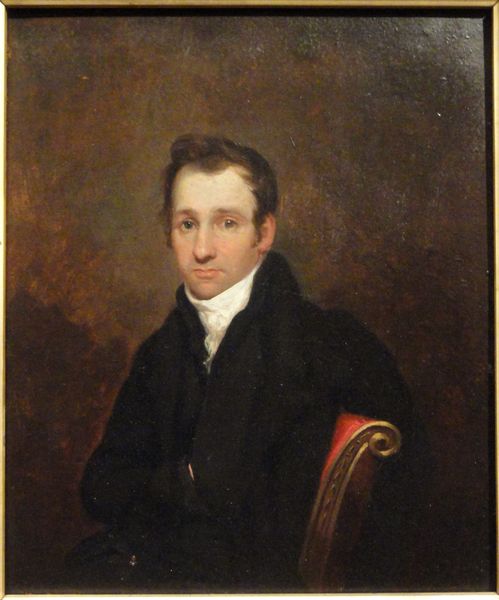
painting
#
painting
#
portrait art
Dimensions: overall: 36.4 x 26 cm (14 5/16 x 10 1/4 in.) framed: 51.4 x 41.2 x 3.1 cm (20 1/4 x 16 1/4 x 1 1/4 in.)
Copyright: National Gallery of Art: CC0 1.0
Curator: Before us, we have a painting from the Prior-Hamblin School, simply titled "Husband," created around 1845. It appears to be a rather straightforward portrait. Editor: Striking! There’s something immediately arresting about his gaze. Despite the formal attire, there's an almost unsettling vulnerability in those eyes. Curator: Agreed. Let's examine the formal aspects. Note the flatness, the almost complete absence of shadow, a deliberate choice by the artist. Observe how this reinforces the painting's surface, emphasizing its status as an object, a carefully constructed artifact rather than a mimetic representation of reality. Editor: But can we really divorce this from the socio-political context of mid-19th century America? To consider its significance as purely formal would be to ignore the power dynamics at play. He's posed as the patriarch. Who was this husband? Did he own land, enslaved people perhaps? It’s impossible not to view the artwork as entangled with those power structures. Curator: Your reading presupposes intentions without sufficient proof. Instead, look at the palette: the muted tones, the contrast between the gentleman's dark suit and the warm flesh tones of his face, creating a focal point drawing the viewer's attention precisely there. It speaks volumes about formal balance. Editor: The rosy cheeks and direct gaze might signal something very different when thinking about power structures within marriage at the time. Or are we only invited to reflect on an antiquated patriarchal idea? What does this imagery signal today about representation and complicity? I think we are pushed into analyzing not only an image of its time but also of ours. Curator: An intriguing reading. His clothing is impeccably painted, isn't it? And those buttons and their precise geometric forms interrupt the flatness of the piece as a counterpoint. Editor: Yes. Perhaps in the face of the personal, this form lends a way to control and perhaps mediate complex social roles and their place within history. Curator: A fruitful exchange. It just demonstrates that formalism can sometimes provide a doorway into understanding contextual realities. Editor: I concur. The materiality, of course, invites and informs the context! Thank you for taking this time with me.
Comments
No comments
Be the first to comment and join the conversation on the ultimate creative platform.

